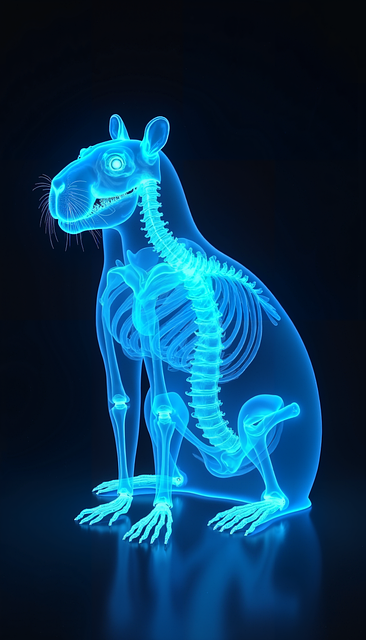Intravenous (IV) contrast agents, such as barium sulfate and iodinated media, significantly enhance X-ray imaging by improving visibility of internal structures like tumors, blood vessels, and blockages. These agents, injected into a patient's bloodstream, alter X-ray absorption properties, creating distinct patterns on imaging plates that aid radiologists in accurate diagnoses. While rare, potential risks include allergic reactions and kidney damage, necessitating thorough patient screening and informed consent. Extensive research supports the effectiveness of IV contrast for X-ray in various body systems when used safely and appropriately.
In the realm of medical imaging, intravenous (IV) contrast plays a pivotal role in enhancing diagnostic accuracy. This article delves into the intricate mechanisms behind IV contrast and its remarkable ability to highlight tumors, blockages, and abnormalities in X-ray images. By understanding how contrast agents interact with various body structures, healthcare professionals can navigate complex pathologies with greater ease. From improving image quality to enabling timely interventions, this exploration highlights the indispensable role of IV contrast in modern radiology.
Understanding Intravenous Contrast: The Basic Mechanism
Intravenous contrast agents play a pivotal role in enhancing the visibility of internal structures during medical imaging procedures, particularly X-rays. These agents are designed to improve contrast between different tissues and abnormalities within the body, aiding radiologists in their diagnosis. The basic mechanism involves the injection of a substance into a patient’s vein, which circulates through the bloodstream and accumulates in specific areas, such as tumors or blockages. This accumulation highlights these structures when imaged, making them stand out against surrounding tissue.
The contrast agent exerts its effect by altering X-ray absorption properties, leading to improved image quality. Different types of contrast agents are used depending on the desired outcome and the specific medical condition being examined. For instance, ionizing agents like barium sulfate are commonly employed in procedures like barium meals or enemas for abdominal imaging, while non-ionizing agents, such as iodinated contrast media, are typically used for angiography, CT scans, and other X-ray examinations to visualize blood vessels and soft tissues.
Enhancing Visuals: How Contrast Improves X-Ray Imaging
In X-ray imaging, the use of intravenous contrast plays a pivotal role in enhancing visual clarity and detecting subtle anomalies. When a patient receives an intravenous injection of contrast agents, these substances circulate through the body, including areas like blood vessels, organs, and tissues. Upon exposure to X-rays, contrast agents reflect or absorb radiation differently compared to surrounding structures, creating distinct patterns on the imaging plates. This stark difference in absorption allows radiologists to distinguish between various types of tissue and abnormalities with greater precision.
The application of intravenous contrast for X-ray is particularly beneficial when examining regions like blood vessels, which can be challenging to visualize due to their similar density to surrounding tissues. By highlighting these structures, contrast agents enable the detection of blockages, tumors, or other pathologies that might go unnoticed in standard X-rays. This enhanced visualization facilitates more accurate diagnoses and aids in planning effective treatment strategies.
Applications: Detecting Tumors, Blockages, and Abnormalities
The application of intravenous contrast in X-ray imaging is a powerful tool for detecting tumors, blockages, and abnormalities across various parts of the body. When a patient receives an intravenous injection of a contrast agent, it allows for enhanced visibility of blood vessels, tissues, and organs on subsequent X-rays. This clarity enables radiologists to identify suspicious growths or narrowing that might otherwise be obscured by surrounding structures.
For example, in detecting tumors, the contrast agent can highlight the tumor’s blood supply, making it easier to pinpoint and differentiate the abnormal tissue from healthy surroundings. Similarly, in cases of blockages, such as those within the intestines or urinary tract, the contrast medium can reveal obstructions, helping healthcare professionals choose the most effective treatment approach. Additionally, abnormalities like cysts or inflammations often display distinct patterns with contrast imaging, aiding in accurate diagnosis and planning for interventions.
Safety and Side Effects: Considerations for Use in X-Rays
The use of intravenous contrast in X-rays offers a powerful tool for visualizing internal structures, but it’s not without considerations. Safety is paramount; healthcare providers must weigh the potential benefits against any risks associated with the dye. While rare, adverse reactions can occur, including allergic responses and kidney damage, especially in patients with pre-existing renal conditions or allergies. Therefore, careful screening of patients before administering contrast agents is essential.
Intravenous contrast for X-ray procedures has been extensively studied, demonstrating its effectiveness in enhancing various body systems. However, it’s crucial to inform patients about potential side effects and obtain informed consent. Proper monitoring during the procedure can mitigate risks, ensuring the safe and effective use of this technique for diagnostic imaging.
Intravenous contrast agents play a pivotal role in enhancing X-ray imaging, offering clear visual distinctions between healthy tissues and anomalies like tumors, blockages, or abnormalities. By understanding how these substances interact with the body’s physiology, healthcare professionals can leverage intravenous contrast for X-rays to make more accurate diagnoses, ultimately leading to improved patient outcomes. When used safely and judiciously, considering potential side effects, this technology serves as a valuable tool in the fight against various health conditions.
